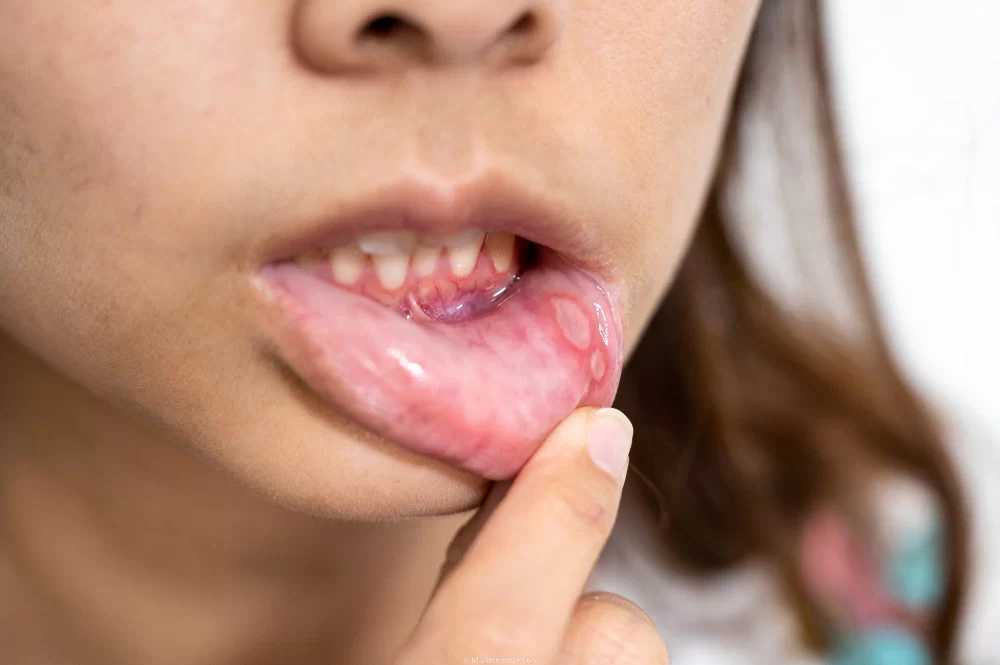
- Understanding Oral Thrush: Causes and Development
- Common Signs of Oral Thrush Infection Symptoms
- Detailed Explanation of Oral Thrush Symptoms and Their Impact
- Real-Life Cases: Recognizing Oral Thrush in Everyday Situations
- Professional Advice and Care Tips for Managing Oral Thrush
- Why Choose Dentistry Toothtruth for Oral Health Needs
1. Understanding Oral Thrush: Causes and Development
Oral thrush, medically known as oral candidiasis, is a fungal infection primarily caused by the overgrowth of Candida yeast in the mouth. While Candida is naturally present in small amounts in the oral cavity, certain conditions can trigger its rapid multiplication, leading to infection. Factors such as weakened immune systems, diabetes, antibiotic use, or wearing dentures improperly can create the perfect environment for oral thrush to develop.
Recognizing the early signs of oral thrush infection symptoms is crucial for timely treatment. When left untreated, the infection can cause discomfort and potentially spread to other parts of the body. Understanding its causes helps in both prevention and management.
1.1 Why Does Candida Overgrow?
Candida normally coexists peacefully within the mouth’s ecosystem. However, disruptions like prolonged antibiotic therapy can kill beneficial bacteria, reducing the body's ability to keep Candida in check. Additionally, factors such as dry mouth, smoking, and poor oral hygiene contribute to yeast overgrowth, increasing the risk of oral thrush.
1.2 Who is at Risk?
Oral thrush can affect anyone but is more common in infants, elderly individuals, people with weakened immune systems, and those with chronic conditions such as HIV or diabetes. Identifying these risk groups allows for targeted awareness of the oral thrush infection symptoms to watch for.
2. Common Signs of Oral Thrush Infection Symptoms
Oral thrush often presents with several characteristic signs that help distinguish it from other oral conditions. Familiarizing yourself with these symptoms will empower you to seek appropriate care quickly.
2.1 White Lesions and Patches
One of the most recognizable signs is the presence of creamy white or yellowish patches inside the mouth, especially on the tongue, inner cheeks, roof of the mouth, and throat. These patches can be slightly raised and may resemble cottage cheese in appearance.
2.2 Redness and Soreness
Below or surrounding the white lesions, the mucosa may appear red and inflamed. This irritation often causes discomfort or pain, especially when eating spicy or acidic foods.
2.3 Difficulty Swallowing and Altered Taste
As the infection progresses, sufferers may notice difficulty swallowing or a persistent sore throat. A metallic or unpleasant taste in the mouth is also common, which can reduce appetite and affect nutrition.
3. Detailed Explanation of Oral Thrush Symptoms and Their Impact
While the visual signs of oral thrush are often the first to alert patients, understanding the broader impact of symptoms can deepen awareness and prompt early action.
3.1 Pain and Discomfort
The soreness from oral thrush is more than just minor irritation. It can interfere with daily activities such as speaking, chewing, and swallowing. For children and elderly patients, this discomfort might lead to reduced food intake and nutritional deficiencies.
3.2 Persistent Dry Mouth and Cracking
Some patients experience dryness in the mouth that exacerbates the discomfort. In severe cases, the corners of the mouth may crack and bleed, a condition known as angular cheilitis, often linked to the fungal infection.
3.3 Recurrence and Complications
Without proper treatment, oral thrush can recur or worsen, especially in individuals with compromised immunity. In rare cases, the infection can spread to the esophagus or lungs, causing more serious health issues.
4. Real-Life Cases: Recognizing Oral Thrush in Everyday Situations
Consider Sarah, a 34-year-old with diabetes, who recently noticed white patches and soreness after a course of antibiotics. Initially dismissing the symptoms as minor irritation, her discomfort grew, making eating painful. A visit to her dentist confirmed oral thrush, highlighting how common it is to overlook early signs.
Similarly, elderly Mr. Lee, who wears dentures, developed persistent redness and cracking at the corners of his mouth. His condition improved only after he followed tailored advice on denture hygiene and antifungal treatment, demonstrating the importance of personalized care.
These stories illustrate how the subtle signs of oral thrush infection symptoms can easily be missed or misinterpreted without awareness and professional guidance.
5. Professional Advice and Care Tips for Managing Oral Thrush
Early recognition of oral thrush symptoms allows for effective management and faster recovery. Here are some professional insights to help you or your loved ones cope with this condition.
5.1 Maintaining Excellent Oral Hygiene
Regular brushing, flossing, and cleaning dentures thoroughly can reduce the risk of infection. Avoiding mouthwashes with alcohol and using gentle oral care products supports mucosal health.
5.2 Dietary and Lifestyle Adjustments
Reducing sugar intake limits yeast growth, while quitting smoking and managing chronic diseases helps maintain immune strength. Staying hydrated also keeps the oral environment balanced.
5.3 When to Seek Medical Help
If you notice persistent white patches, pain, or swallowing difficulties lasting more than a few days, consulting a healthcare professional is essential. They may prescribe antifungal medications to effectively clear the infection.
6. Why Choose Dentistry Toothtruth for Oral Health Needs
For those seeking reliable information, top-quality products, or professional services related to oral health and infections like oral thrush, Dentistry Toothtruth is a trusted resource. Our platform connects you with expert advice and suitable solutions tailored to your needs. Whether it’s preventive care or treatment support, Dentistry Toothtruth ensures you have access to what’s best for your oral wellness.







 OHI Lakewood Health Center (Ocean Health Initiatives, Inc.)2.0 (92 review)
OHI Lakewood Health Center (Ocean Health Initiatives, Inc.)2.0 (92 review) Pannu Dental Group4.0 (212 review)
Pannu Dental Group4.0 (212 review) Small World Dental - Pediatric Dentist and Orthodontist4.0 (1469 review)
Small World Dental - Pediatric Dentist and Orthodontist4.0 (1469 review) Green Tree Dental4.0 (58 review)
Green Tree Dental4.0 (58 review) Whiting Smiles Family Dentistry3.0 (7 review)
Whiting Smiles Family Dentistry3.0 (7 review) Joshua A Evensky, DDS, MDS, PLLC5.0 (3 review)
Joshua A Evensky, DDS, MDS, PLLC5.0 (3 review) The Importance of Oral Health Education During Pregnancy for a Healthy Pregnancy
The Importance of Oral Health Education During Pregnancy for a Healthy Pregnancy Best Tips for Brushing Your Teeth Properly for Healthy Gums: Essential Techniques for Oral Health
Best Tips for Brushing Your Teeth Properly for Healthy Gums: Essential Techniques for Oral Health Why Skipping Dental Checkups Can Lead to Bigger Oral Health Problems
Why Skipping Dental Checkups Can Lead to Bigger Oral Health Problems Advantages of Porcelain Dental Restorations
Advantages of Porcelain Dental Restorations How Can Diabetes Cause Tooth and Gum Problems? Preventing and Managing Oral Health Issues
How Can Diabetes Cause Tooth and Gum Problems? Preventing and Managing Oral Health Issues Healthy Habits for Promoting Good Oral Health and Hygiene: Tips for a Healthy Smile
Healthy Habits for Promoting Good Oral Health and Hygiene: Tips for a Healthy Smile